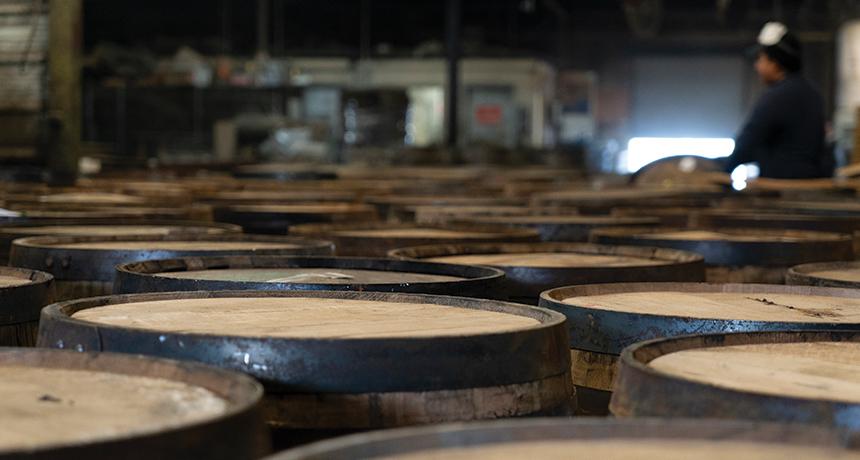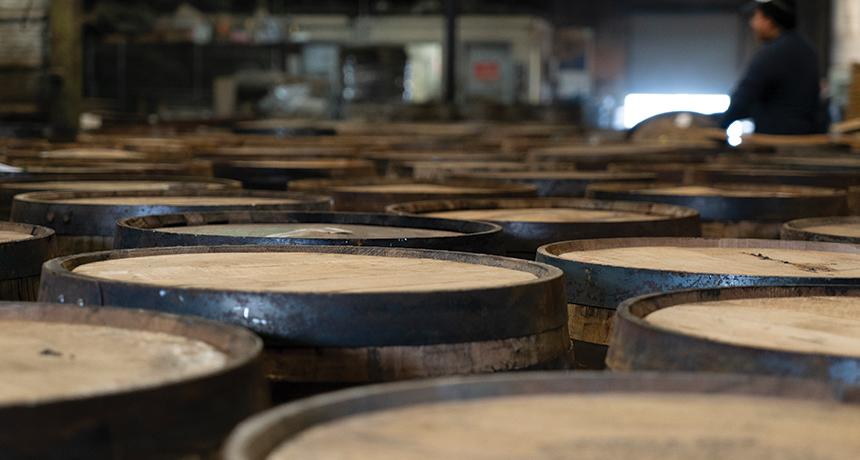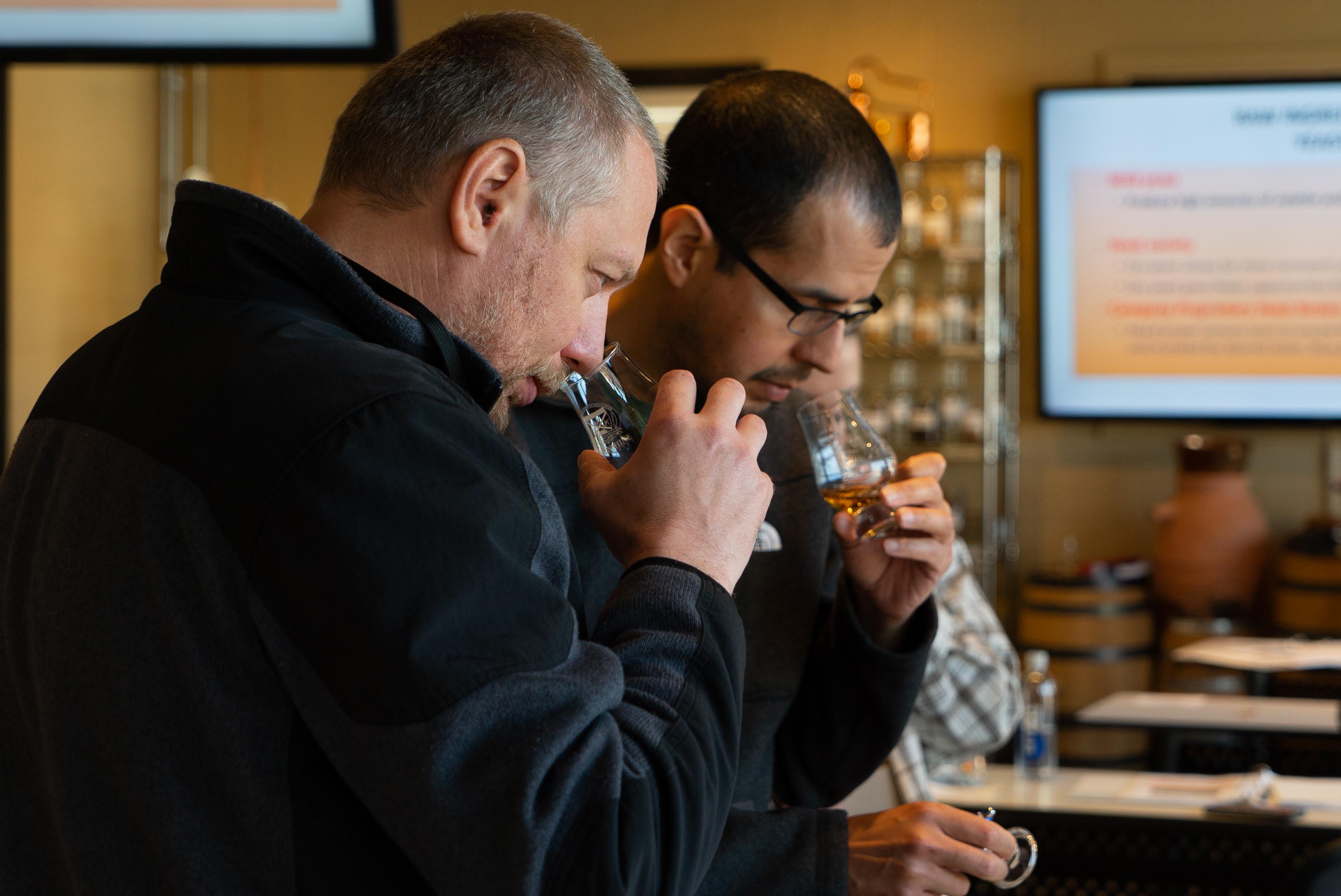
The Art of Non-Alcoholic Spirits
blog
For decades, spirits and cocktails have fostered a culture of craft, connection, and celebration. But over time, cocktail culture has evolved far beyond the buzz!


By law, Bourbon must be aged in new charred oak barrels. That means that after a Bourbon has finished up its time in the barrel, it cannot be used again to make more Bourbon. Facing a lot of empty barrels, winemakers and brewers have since found a creative solution by creating a new style for consumers to enjoy — Bourbon barrel-aged wine and beer!
What happens when these categories collide?
Those who tend to prefer Bourbon barrel-aged beer and wine often favor it for its taste differences: it is often sweeter, richer, and higher in alcohol content. The used Bourbon barrel is responsible for imparting caramel, maple, brown sugar, and vanilla flavors along with notes of smoke and oak. Meanwhile, the hard liquor remaining in the wood raises the ABV.
Supporters of the innovation say that Bourbon barrel-aged wine and beer provide a good transition for spirits fans entering the worlds of wine and beer — but the style does have its critics.

While producers have experimented with Bourbon barrel-aged wine before, the first major product of this style wasn't introduced to the US until 2014. French oak has traditionally been the preferred wood for wine maturation, but fueled by higher demand for innovation as well as cost efficiencies, wineries have begun testing out barrels that once held spirits.
As more and more of these wine varieties pop up on the shelves, purists argue that the new product is just a marketing gimmick, citing how some companies choose to brand their wine's bottles and labeling to resemble that of spirits. They argue that consumers fascinated with the "Bourbon" component may fail to realize they can purchase an oak barrel-aged wine that tastes similar and is more affordable.
One fear that critics have of Bourbon barrel-aged wine is that it provides a way to mask off notes in "sub-par fruit" by adding another flavor. The idea is that wineries could add an unsellable wine to a Bourbon barrel to not only mask undesirable flavors, but also justify a higher price point.
Another argument is that wine aged for too long in used spirits barrels can mar the natural profile of the fruit, which is the distinctive character of a wine. They criticize this "over-aged" wine for tasting too much like the spirit that once inhabited the barrel. Of course, skilled producers have found ways to prevent the Bourbon character from overwhelming the wine. Some of these include limiting aging time, aging only a portion of the wine in the used barrel, or finding older used barrels.
Because the maturation process, flavor profile, and marketing of Bourbon barrel-aged wine differs significantly compared to traditional styles, it has raised concerns over whether it should be considered a wine at all. But according to consumers, that's not necessarily a bad thing. As one writer from Vinepair put it, "So it's not wine, at least not in a traditional or recognizable way. The thing is, that's exactly why everyone making and buying it likes it so much."
While sales were slow at first, the style has since gained popularity and has continued to experience steady growth. As consumers look for fresh takes on their favorites, the spirits-barrel-aged category earned more than $120 million in 2019 — up from $800,000 in 2015. It doesn't hurt to be different!

It is no surprise that craft beer lovers are serious about their beer. They're often more willing to try new styles of pricier, higher ABV beers than the typical consumer. Walk down the beer aisle today and you'll find a variety of unique styles that can cost as much as a bottle of wine — Bourbon barrel-aged beer is one of those.
In 1992, Goose Island introduced the first Bourbon barrel-aged beer. Like wine, the style didn't take off right away but has since seen increased popularity as brewers answer consumer demands for new flavors in their favorite brews. In the last three years alone, sales of barrel-aged beers have increased 20%, according to the Brewers Association.
Barrel-aging beer can be quite difficult. In order to get the best results, producers recommend wet barrels — those that have been emptied within a few weeks — be used for aging this style of beer. That's because if freshly emptied barrels are left for too long, they will begin to dry out. When this happens, the staves can contract, leaving the barrel prone to leaking once the beer is added. This makes the process especially difficult for breweries that require their barrels to be shipped to them.
Barrel-aging also doesn't work well with all types of beers. Some experts note that Bourbon barreling is best suited for heavier beers with a higher ABV and complimentary flavor profile that can stand up to the Bourbon character imparted by the used barrel. Stouts and Porters aged in Bourbon casks are said to be particularly delicious.
Whether you're a beer or wine lover seeking something a little different, or a Bourbon enthusiast looking to expand your horizons, Bourbon barrel-aged beer and wine offers a unique and flavorful experience that can appeal to a variety of consumers. As producers master the craft and consumers continue to explore newfound tastes, the category is sure to grow — and that's something we can all drink to!
Discover the art and science of distilling by taking a hands-on class at Moonshine University. Check out our course catalog to learn more.

blog
For decades, spirits and cocktails have fostered a culture of craft, connection, and celebration. But over time, cocktail culture has evolved far beyond the buzz!

blog
Those that are familiar with the process of crafting distilled spirits may also be familiar with the 10 common congeners that are created during fermentation, and honed during the distillation run. Each congener has its own distinct personality, rendering unique tastes and aromas to the finished spirit.

blog
So, you want to start distilling with freshly milled grain. Maybe you're tired of paying top dollar for the pre-milled stuff from the malt distributor, and you're ready to invest in the quality, efficiency, and bulk pricing that comes with milling your own whole grain. But where do you start?